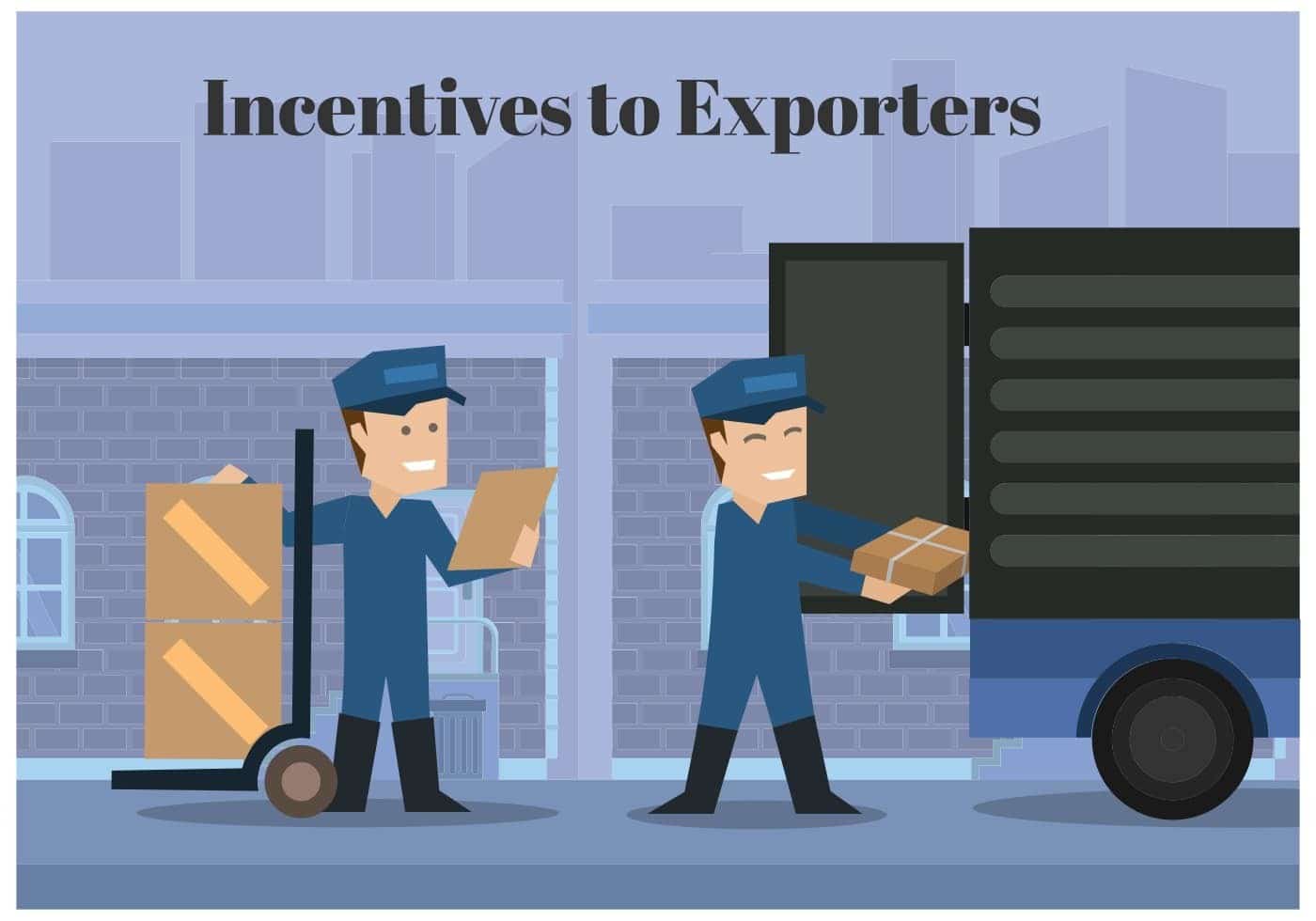As a developing economy, India relies significantly on foreign exchange inflows to simulate growth, sustain imbalances and meet its economic and social objectives.
Export promotion has always been one of the top priorities for the Government of India. Several export promotion programs have been introduced from time to time with a special focus on the Indian MSME sector.
The export promotion programs are in the form of granting incentives to exporters, concessional tax rates, exemption from input taxes etc. Some of the export incentives in India currently in force are:
- Concessional Tax Rates for Merchant Exporters
- Exemption for Ocean Freight
- Merchandise Exports from India Scheme (‘MEIS’)
- Service Exports from India Scheme (‘SEIS’)
- Advance Authorization
- Duty Free Import Authorization under Export Promotion Capital Goods
A Merchant Exporter is a person engaged in purchase of goods in domestic market for export. A merchant Exporter is a trader engaged only in trading activity. A Merchant Exporter should not be involved in the manufacture of goods intended for export.
1. Concessional Tax Rates for Merchant Exporters
Globally, it is a general norm that exports should be zero rated, i.e., only the real value of goods/ services should be exported and not the taxes.
In the pre-GST era, Merchant Exporters used to procure goods intended for export, without payment of taxes. However, in the GST era, similar provisions exist, subject to fulfilment of certain conditions.
Vide notification no. 40/2017- Central tax (Rate) and 41/2017 – Central tax (Rate) dated 23 October 2017, Merchant Exporters are permitted to procure goods intended for export at a concessional rate of 0.1% as under:
- Intra-state supply – CGST @ 0.05% and SGST @ 0.05%
- Inter-state supply – IGST @ 0.1%
Read more about merchant exporter and conditions to be fulfilled for exported under concessional rates.
2. Exemption for Ocean Freight
Ocean Freight is one of the critical components in determining the loading price for the foreign importers. As a component of the loading price, Ocean Freight effects the competitiveness of the Indian exporters.
Vide Notification No. 14/2018 Central Tax and Notification 2/2018 Central Tax (Rate), services in the nature of transportation of goods by a vessel from customs station of clearance in India to a place outside India have been exempted from levy of GST.
Accordingly, freight charges paid to a shipping vessel for export of goods from India is not subject to GST.
This would result in favourable working capital inflows for the Indian exporters. This benefit is available till 30 September 2019.
3. Merchandise Exports from India Scheme (‘MEIS’)
Merchandise Exports from India Scheme (MEIS) is an export promotion scheme introduced by the Government of India.
The Merchandise Exports from India Scheme (MEIS) scheme seeks to promote export of notified goods manufactured or produced in India to notified countries.
The objectives of the Merchandise Exports from India Scheme (MEIS) are also aligned to the ‘Make in India’ scheme launched by the Government of India. These schemes aim to transform India into a global hub for manufacture of goods for both exports as well as domestic consumption.
One of the primary objective for introduction of Merchandise Exports from India Scheme (MEIS) is to offset downsides of the infrastructural inefficiencies faced by Indian exporters of specified goods and to provide a level playing field at the global level.
The eligible exporters are entitled to claim incentive in the form of Duty Credit Scrips (DCS). Duty Credit Scrips (DCS) are issued by the Dire tor General of Foreign Trade (DGFT). It is pertinent to note that DCS is in addition to the existing duty drawback scheme.
4. Service Exports from India Scheme (‘SEIS’)
Service Exports from India Scheme (SEIS) is another export promotion scheme introduced by the Government of India for promoting export of certain services from India.
By rewarding Indian service exporters, the Government of India is simulating the growth of Indian service exports. These measures which in turn result in increased foreign exchange inflows into India.
The eligible service exporters under Service Exports from India Scheme (SEIS) are entitled to claim incentive in the form of Duty Credit Scrips (DCS). Duty Credit Scrips (DCS) for Service Exports from India Scheme (SEIS) are issued at a notified percentage (3% to 5%) on the net foreign exchange inflows resultant into India.
Duty Credit Scrips (DCS) results in positive working capital flows for the exporters at the time of utilisation. Duty Credit Scrips (DCS) are freely transferable in the open market for cash.
The Government has notified 12 different classes of services eligible for claiming incentives under SEIS scheme encompassing the following:
- Professional Services
- Research and Development
- Rental/ Leasing Services
- Audio Visual Services
- Construction and Related Engineering Services
- Educational Services
- Environmental Services
- Health and Social Services
- Tourism and Travel Services
- Recreational, Cultural and Sporting Services
- Transport and Auxiliary Services
- Other Business Services.
Each class further lists down the specific eligible services under the SEIS scheme. The Government has selected these services based on their potential to generate foreign exchange inflows into India. The SEIS also incentivizes Indian service exporters to be competitive at the global level.
Read more for procedure for SEIS incentives
Click here to apply SEIS incentives services
Read more about SEIS Export Incentive
5. Advance Authorization Scheme
Advance Authorization Scheme (‘AA’) is a scheme aligned to provide benefit for goods imported into India for undertaking value addition and exported thereafter.
This scheme endorses the import of duty-free inputs which would be physically integrated into the export product(s).
Any Manufacturer Exporters or Merchant Exporters who are linked with supporting manufacturers for physical exports (including exports to SEZ), intermediate supplies, and supply of ‘stores’ on board of foreign going vessel/ aircraft, can avail the benefit of Advance Authorization Scheme (‘AA’), subject to conditions.
In addition, Following person can also availed benefits under Advance Authorization Scheme (‘AA’).
- Sub-contractors of any project (where the name of the sub-contractors appears in the main contract)
- Supplies to United Nations Organizations (UNO)
- Aid programs of the UNO or other multilateral agencies, which are paid for in free foreign exchange
- Importers of raw sugar for further processing and export
The Advance Authorization Scheme (‘AA’) holder is required to fulfil various conditions such as
- Pertaining to registration,
- Movement of goods,
- End use of imported goods,
- Certifications at various stages,
- Minimum value addition in Indian prior to export,
- Fulfilment of timelines under export obligation period and annual compliances.
6. Duty Free Import Authorization under Export Promotion Capital Goods
Export Promotion Capital Goods (‘EPCG’) Scheme is one of the path breaking initiative introduced by the Government of Indian to facilitate import of capital goods into India.
The purpose of Export Promotion Capital Goods (‘EPCG’) Scheme is to bring globally competitive in manufacturing and qualitative goods/ services in order to enhance India’s export competitiveness and incentivising Indian exporters.
Under the Export Promotion Capital Goods (EPCG) scheme, capital goods can be imported to be used in the pre-production, production and post-production stages are permitted to be imported at zero customs duty. The authorisation is valid for a period of 18 months from the date of issue.
The EPCG Scheme permits import of various types of new capital goods. Used capital goods cannot be imported under EPCG Scheme.
Indian exporters are required to export services aggregating to six times of the duty saved at the time of import, in lieu of the benefit received.






